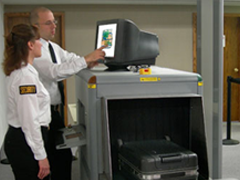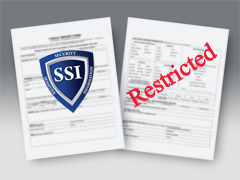 Everyday security screeners at airports all over the world have a very difficult job to do. Security screeners often lack up-to-date threat information as they screen hundreds of passenger bags each day. They rely on any current information provided by local authorities and their own historical knowledge to make the best decisions possible.
Everyday security screeners at airports all over the world have a very difficult job to do. Security screeners often lack up-to-date threat information as they screen hundreds of passenger bags each day. They rely on any current information provided by local authorities and their own historical knowledge to make the best decisions possible.
Talking with security screeners from a wide variety of international airports about this issue, one common theme prevails. There is no formal mechanism for sharing such threat information. In most cases, the best sources for getting information about new or emerging security threats are via the media or when items are found at the checkpoint where the security screener works.
Becoming Proactive
 Some governments do recognize this issue and are becoming more proactive about sharing information. The United States Transportation Security Administration (TSA) uses a blog, Instagram, and other social media platforms to share information about prohibited articles found at security checkpoints. The United Kingdom Department for Transport (DfT) provides information to airports, security companies, and trainers about some of the more interesting items found at checkpoints in the UK.
Some governments do recognize this issue and are becoming more proactive about sharing information. The United States Transportation Security Administration (TSA) uses a blog, Instagram, and other social media platforms to share information about prohibited articles found at security checkpoints. The United Kingdom Department for Transport (DfT) provides information to airports, security companies, and trainers about some of the more interesting items found at checkpoints in the UK.
I’m sure there are other examples of information sharing between local or regional airports. However, this vital information is not shared on a global scale even though the airline industry is a global industry.
What are some of the hurdles?
 Considering the information about threats to aviation is restricted and sensitive, it’s no wonder sharing this information can be difficult. This issue aside, the industry also has some infrastructure and technology hurdles it must overcome.
Considering the information about threats to aviation is restricted and sensitive, it’s no wonder sharing this information can be difficult. This issue aside, the industry also has some infrastructure and technology hurdles it must overcome.
- There is no standard for capturing and organizing threat information into a cohesive distributable format.
- There is no reliable distribution system that can be used by the global aviation industry.
- Access to technology and training to reproduce threats for use in training security screeners is limited.
Thoughts for the Industry to Consider
The industry must recognize the importance of threat information sharing on a global scale. The industry should:
- Establish a priority to collect, organize, and distribute updated threat information to frontline personnel.
- Work with technology vendors to integrate a seamless mechanism to store and export X-ray images in formats that can easily be distributed and viewed on common devices such as PCs, tablets, and smart phones.
- Work with training developers and vendors to create an open standard for X-ray images and metadata used in training programs, so distribution and use are not limited to a specific vendor solution.
